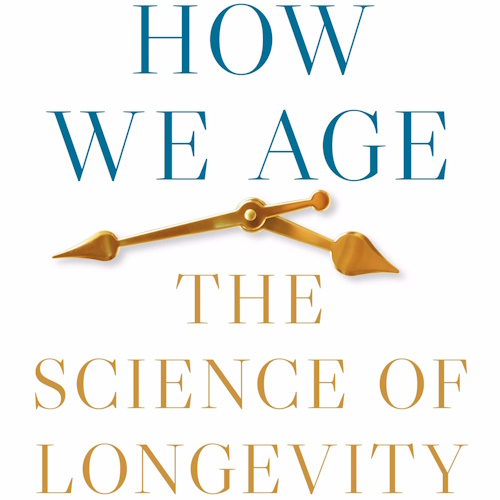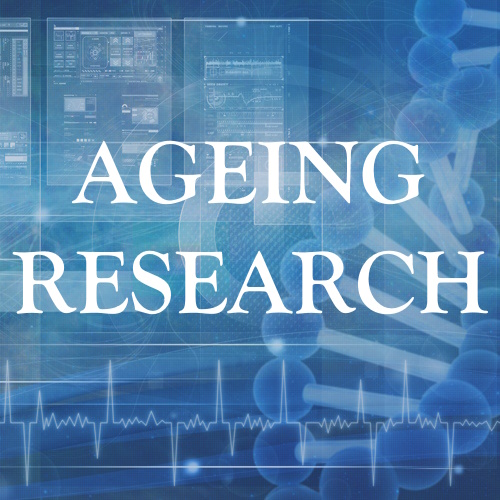How We Age: The Science of Longevity
Book written by Coleen Murphy about recent breakthroughs in longevity research offer clues about human aging
All of us would like to live longer, or to slow the debilitating effects of age. In How We Age, Coleen Murphy shows how recent research on longevity and aging may be bringing us closer to this goal. Murphy, a leading scholar of aging, explains that the study of model systems, particularly simple invertebrate animals, combined with breakthroughs in genomic methods, have allowed scientists to probe the molecular mechanisms of longevity and aging. Understanding the fundamental biological rules that govern aging in model systems provides clues about how we might slow human aging, which could lead in turn to new therapeutics and treatments for age-related disease.
Among other vivid examples, Murphy describes research that shows how changing a single gene in the nematode worm C. elegans doubles its lifespan, extending not only the end of life but also the youthful, healthy part of life. Drawing on work in her own lab as well as other recent research, Murphy chronicles the history and current state of the field, explaining longevity’s links to reproduction and mating, sensory and cognitive function, inheritances from our ancestors, and the gut microbiome. Written with clarity and wit, How We Age provides a guide to the science: what we know about aging, how we know what we know, and what we can do with this new knowledge.
How We Age Book Review
Coleen Murphy says near the beginning of The Science of Longevity that it's not intended to be yet another celebrity's viewpoint on aging or another diet book. This I agree with, though would go a bit further. Although it's not a text book, in my opinion it's beyond a popular science book about longevity. So much so, that I gave up a third of the way in. Although I had been looking forward to getting onto the biology of ageing (instead of semi-substantiated life hacks) I had assumed it was going to be in humans.
As the author admits, the book focuses mostly on worms and flies. For anyone thinking about, or is already doing, ageing researching in animal models, this could be a really interesting introduction to the science (as I'm sure Murphy has tried to simplify it for us mere popsci readers) - but the detail may be too much for many, and the title How WE Age may be a bit misleading unless you're a very high IQ worm!
Highlights
Here are 66 key points from (the first third of!) How We Age:
- One’s likelihood of supporting the idea of aging research is generally correlated with one’s age.
- Almost everything we know at the molecular level about the underlying mechanisms controlling (regulating) longevity is because of the work that was done first in invertebrate model systems.
- Life expectancy is still not entirely an issue of getting older people to live longer but also survival through childhood and adolescence.
- Current centenarians have not benefitted from any of the knowledge that we are now obtaining about the molecular underpinnings of longevity.
- The unequal distribution of medical care is a socioeconomic problem that we need to solve for reasons independent of any potential longevity extension therapies.
- The goal of most serious aging research is to extend healthy lifespan.
- We already know one simple trick to increase one’s lifespan: be rich.
- Long-lived mutant worms have extended the healthy part of their lives.
- Increased lifespan in the absence of increased health is not beneficial.
- Aging at its most basic level can be thought of as a loss of homeostasis, an inability to repair damage at a sufficient rate for the organism to remain unchanged with time.
- One of the most intuitive and oldest theories of aging is a simple “wear and tear” model.
- Many seemingly immortal animals constantly replace their own cells.
- An early theory of aging was Peter Medawar’s “mutation accumulation” theory.
- George Williams’s antagonistic pleiotropy theory suggested that some genes may confer a benefit to an organism early in life but the activity of that same gene may be deleterious late in life.
- Many highly conserved, essential developmental genes actually extend lifespan when knocked down only in adulthood.
- Long-lived C. Elegans mutants suppress vitellogenin production, and the reduction of those lipid-carrying proteins does extend lifespan.
- While ROS may be part of the problem, they are unlikely to be the whole cause of aging.
- In some contexts antioxidants may actually be deleterious.
- The average lifespan of Korean eunuchs was reported to be about 14 years longer than that of men with similar or better socioeconomic status.
- Some aspects of the disposable soma theory may be correct, but it is not as direct as originally proposed.
- Semelparous animals reproduce only once and then die right after they’ve finished reproducing, for example, Pacific salmon.
- We do not need to invoke the grandmother hypothesis to explain long post-reproductive lifespans.
- We should view aging and longevity not as the main goal of an animal but as a side-effect of post-reproductive survival.
- Tiny changes to functioning insulin/ IGF-1 signaling pathway genes might confer a longevity benefit to individuals.
- A well-publicized Nature paper suggested that 115 years is the maximum lifespan that humans can achieve... it does not imply that we can never live any longer if appropriate treatments were developed.
- The #10 longest-lived woman, Misao Okawa, lived over 117 years, while the longest-lived man so far, Jiroemon Kimura, died at 116.
- Many supercentenarians seem to have lived extraordinarily long in spite of unhealthy behaviors, such as smoking, drinking, and odd diets.
- The best predictor of whether you will live a long time is whether you have long-lived family members.
- These three genes are the most consistently identified candidate genes across all longevity GWAS studies: APOE, FOXO3A, CHRNA3/5.
- The mysterious chromosome location 5q33.3 has also emerged in recent longevity GWAS and may have a role in blood pressure regulation and cardiovascular disease.
- FOXO is required for insulin-signaling-mediated longevity in many species, and increasing the activity of FOXO homologs extends lifespan.
- The insulin/IGF-1 signaling pathway and its control of FOXO activity is likely responsible for at least some component of extreme human longevity.
- An increase in body mass index (BMI) of one index unit reduces lifespan by 7 months.
- The “Betterhumans Supercentenarian Research Study” set is currently relatively small (about 60 supercentenarian DNA samples).
- In a meta-analysis, Stuart Kim’s group (Stanford) developed “informed GWAS” (iGWAS), which found eight genes that associate with longevity.
- Calico used data from Ancestry.com to explore genetic links to lifespan (note: not exceptional longevity) and uncovered none.
- Calico’s results suggest that lifestyle and socioeconomic factors, after all, may outweigh most genetic links to lifespan, at least among people with normal rather than exceptional longevity.
- Groundbreaking longevity research done in yeast, C. elegans, Drosophila, and mice has been instrumental in making longevity studies feasible.
- Jonathan, a giant Seychelles land tortoise living on the island of Saint Helena, is currently the longest-living live terrestrial animal at 190 years.
- Bowhead whales have been found to live over 200 years and are the longest-living mammals known.
- Naked mole rats live into their 30s or beyond, resulting in an LQ of at least 4.
- NMRs have increased DNA repair, proteome maintenance, autophagy, and proteasome activity.
- Eusocial insects present a particularly vexing example for those who cling to the reproduction/longevity trade-off idea, because the queens are both very long-lived and remarkably reproductive.
- Although worms and flies seem very different from us, in fact they share most of our genes.
- We can take a lot more chances and study many more genes in these cheaper, shorter-lived animals.
- Despite their small size, the fruit fly Drosophila melanogasterthey has real organs, such as a heart, gut, and a complex brain.
- The nematode Caenorhabditis elegans led to the discovery and genetic analyses of many of the basic cellular processes that are cornerstones of molecular biology today.
- One by one, the genes that connected insulin/IGF-1 signaling with FOXO activity in both worms and flies were found to control longevity.
- I will focus mostly on worms and flies in this book.
- Yeast (Saccharomyces cerevisiae) budding of a daughter cell from a mother cell can lead to retention of damaged proteins in the old mother.
- The African turquoise killifish (Nothobranchius furzeri), has blazed onto the aging research scene in the past few years.
- Valenzano’s lab showed that transfer of gut microbiota from young to middle-aged fish can extend lifespan.
- Model systems can even be used to model human quality of life characteristics, including cognitive decline.
- Long-lived individuals experience a significant delay in the onset of age-related diseases.
- Older people often walk not just more slowly but also with a wider stance to combat a loss of balance.
- Facial aging is due to both extrinsic and intrinsic factors.
- David Gems (University College London) is now basically a worm coroner.
- Whenever we can, we should model worm healthspan assays on human aging characteristics.
- Maximum speed [of C. elegans] is more informative than average speed.
- Measuring the maximum velocity on “no food” plates, Nam’s lab had measured the worms’ true ability to move, rather than their desire to search for food.
- daf-2 worms have better memory with age.
- When there is not enough food to go around, they feel too crowded, or the temperature gets too high, C. elegans forms an alternative larval state known as “dauer.”
- In 1997, Ruvkun’s lab solved the daf-2 mystery: the gene encoded an insulin-like receptor.
- Mid-life treatment with an inhibitor of phosphoinositide 3-kinase (that’s what age-1 encodes) increased mouse lifespan 10%.
- daf-2 animals seem to interpret the low activity of the DAF-2 receptor as a sign of a slight nutrient stress.
- The daf-2-upregulated gene list has become a veritable Who’s Who of aging mechanisms.
Visit website: https://press.princeton.edu/books/hardcover/9780691182636/how-we-age
Details last updated 19-Feb-2024





